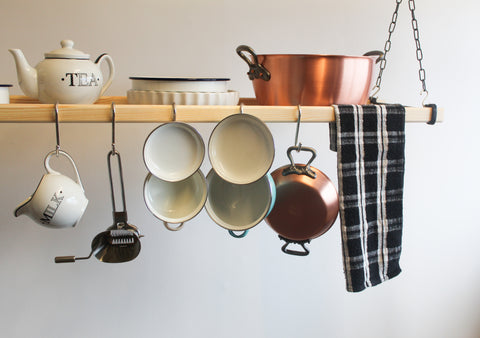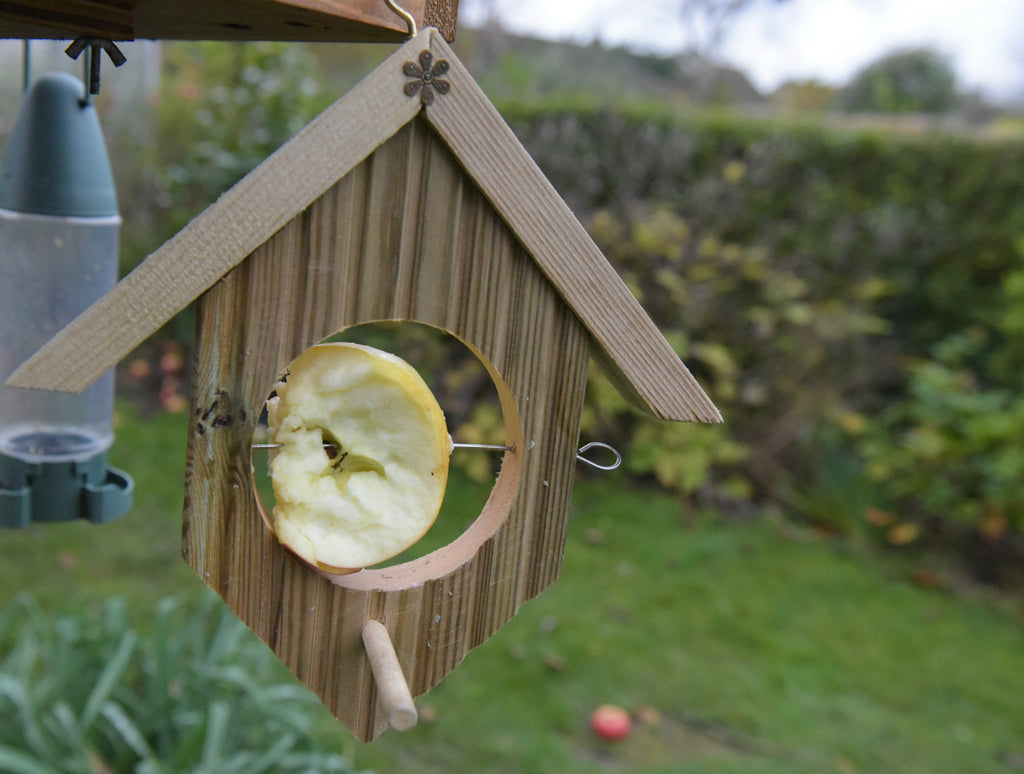Why Ceiling Pulley Clothes Airers Are Making a Sustainable Comeback
In an age where sustainability has moved from niche interest to mainstream necessity, households across Britain are rediscovering traditional solutions to everyday challenges. Among these eco-friendly revivals, the ceiling pulley clothes airer stands out as a particularly elegant answer to the modern conundrum of energy-efficient laundry drying.
Once a staple in Victorian homes across the UK, these ingeniously simple devices are experiencing a remarkable renaissance. At Thatch & Stone, we've witnessed firsthand the growing demand for our traditional Victorian ceiling pulley clothes airers that combine timeless craftsmanship with practical functionality. Each piece in our collection marries heritage design with everyday utility, offering an authentic Victorian-inspired solution that works perfectly in contemporary homes.
Far from being relics of a bygone era, these traditional airers offer compelling benefits for today's environmentally conscious homeowner, providing a beautiful and eco-friendly way to dry laundry naturally while making a subtle statement about sustainable living.
The Rise of Eco-Friendly Laundry Drying
The humble act of drying laundry has surprisingly significant environmental implications. Tumble dryers rank among the most energy-hungry appliances in British homes, consuming between 2 and 4 kWh per cycle—a substantial contribution to both household energy bills and carbon footprints. As energy costs continue to climb and environmental awareness deepens, many households are seeking alternatives that align with more sustainable living practices.
Ceiling pulley airers represent perhaps the most elegant solution to this everyday challenge. Operating without a single watt of electricity, these mechanical systems harness nothing more than natural air flow and ceiling height to dry clothes effectively. Our traditional Victorian ceiling pulley clothes airers at Thatch & Stone embody this eco-conscious approach, crafted from sustainably sourced wood and durable iron fittings as a direct alternative to energy-intensive modern appliances.
The environmental mathematics are simple yet compelling: every load of laundry dried on a pulley airer rather than in a tumble dryer represents both immediate energy savings and a measurable reduction in household carbon emissions. By choosing one of our airers, you're making a conscious decision to embrace eco-friendly laundry drying methods that align with contemporary environmental concerns while honoring traditional craftsmanship.
This shift towards sustainable drying solutions reflects a broader movement in British home design—one that values sustainability not as an optional extra but as a fundamental consideration
Victorian Ingenuity for Contemporary Challenges
Victorian ceiling airers emerged as a brilliantly simple answer to the perennial challenge of drying clothes in Britain's notoriously damp climate. Their design utilised several principles that remain as relevant today as they were 150 years ago: the natural rise of warm air, the maximisation of vertical space, and the mechanical advantage provided by a simple pulley system.
At Thatch & Stone, we've remained faithful to these time-tested principles in our range of traditional Victorian ceiling pulley clothes airers. Crafted from sustainably sourced wood and durable iron fittings, our airers honour authentic Victorian design while incorporating subtle improvements in materials and craftsmanship. Each piece represents a perfect marriage of historical accuracy and modern requirements.
These Victorian airer benefits continue to make perfect sense in contemporary homes. The design allows clothing to be suspended high in the warmest part of the room, where rising heat naturally accelerates the drying process. When not in use, the entire apparatus can be hoisted back to ceiling height, reclaiming valuable floor space. The pulleys themselves provide mechanical advantage, making it remarkably easy to raise even a fully-loaded airer with minimal effort.
Maximising Space in Modern British Homes
Space constraints remain a pressing reality for many UK households. With the average British home offering considerably less floor space than European counterparts, finding space-saving clothes drying solutions becomes particularly crucial during colder months when outdoor drying isn't viable.
Traditional ceiling airers address space challenges brilliantly by utilising a dimension of domestic space that typically goes unused—the area between head height and ceiling. By suspending laundry in this otherwise empty zone, pulley airers deliver considerable drying capacity without sacrificing precious floor area. This vertical thinking makes them especially valuable in:
-
Compact urban flats where every square metre counts
-
Period terraced houses with limited utility space
-
Open-plan living arrangements where visible drying racks would compromise aesthetics
-
Family homes where floor space is at a premium for children's activities
The adjustable nature of pulley systems adds another layer of space-efficiency. When lowered for loading or unloading laundry, the airer sits at a convenient working height; when raised, it lifts damp clothing into the warmest air while simultaneously clearing the space below. This dual-purpose functionality represents space-saving at its most intelligent—a solution that doesn't merely compress activities into smaller areas but actively utilises the three-dimensional nature of domestic space.
Our customers consistently report that installing a ceiling airer transforms their laundry routines, particularly in the challenging winter months when balancing adequate ventilation with heating costs becomes most difficult. The ability to raise damp clothing away from living space while still enabling effective drying represents a space-saving approach that delivers multiple benefits.
Economic Advantages in Times of Rising Energy Costs
The financial case for traditional airers has become increasingly compelling amid the energy price volatility experienced across the UK in recent years. With electricity costs reaching unprecedented levels, the tumble dryer—already one of the most expensive appliances to run—has become a genuine luxury for many households.
A ceiling pulley airer offers immediate and ongoing economic benefits:
Eliminated Running Costs: Unlike electric dryers that consume 2-4 kWh per cycle (currently costing approximately 60p-£1.20 at average UK electricity rates), pulley airers operate completely cost-free after installation.
Reduced Clothing Replacement: The gentle air-drying process significantly extends fabric lifespan compared to tumble drying, which gradually damages fibres through heat and mechanical action. Higher-quality clothing items particularly benefit from traditional drying methods.
Minimal Maintenance Requirements: With no motor, heating element, sensors or electrical components, our pulley airers require virtually no maintenance beyond occasional rope replacement, representing exceptional lifetime value.
Long-Term Durability: A well-crafted ceiling airer, such as those we craft at Thatch & Stone, represents a one-time investment in a solution designed to last a lifetime—a stark contrast to modern appliances with much shorter operational lifespans. Built from raw, natural materials, each of our airers is a statement of quality and durability.
By making use of the warm air that rises naturally in your home, you'll enjoy quicker drying times without relying on energy-hungry tumble dryers. For a typical family running 4-5 dryer loads weekly, the switch to a ceiling airer can represent annual savings exceeding £200 at current energy prices. This economic advantage combines powerfully with environmental benefits to make traditional drying methods increasingly attractive to cost-conscious households seeking sustainable alternatives to energy-intensive appliances.
Gentler Care for Clothing and Textiles
Beyond the environmental and economic considerations, ceiling airers offer significant advantages for clothing care. The aggressive tumbling action and high heat of modern dryers gradually damages fabric fibres, leading to premature wear, shrinkage and colour fading—issues that are particularly problematic for higher-quality garments and natural fibres.
Air drying via a ceiling pulley system allows textiles to dry naturally, maintaining their structural integrity and appearance for significantly longer. The gentle drying process is especially beneficial for:
Delicate Natural Fabrics: Wool, silk, cashmere and linen items maintain their quality substantially longer when air dried rather than tumble dried.
Coloured Clothing: The preservation of dyes is notably superior with air drying, preventing the gradual fading that reduces garment lifespans.
Elasticated Items: Activewear, undergarments and any items containing elastic components maintain their stretch and shape better when heat is eliminated from the drying process.
Heirloom Textiles: For precious household linens passed through generations, traditional drying methods offer preservation benefits that modern alternatives cannot match.
Many customers report that the improved care for clothing represents one of the most satisfying aspects of returning to traditional drying methods with our airers. There's a perceptible difference in how fabrics maintain their hand feel, drape and appearance when dried naturally—a quality distinction that becomes increasingly apparent as more loads are processed using heritage techniques rather than modern mechanical alternatives.
Aesthetic Integration in Contemporary Interiors
Far from being purely utilitarian, ceiling pulley airers can become striking design features in their own right. Their honest mechanical simplicity aligns perfectly with several current interior trends, including industrial heritage, functional minimalism, and authentic period detailing.
Heritage Properties: In Victorian, Edwardian or Georgian homes, our traditionally crafted wooden pulley airers provide period-appropriate functionality that enhances rather than compromises architectural integrity.
Contemporary Spaces: In modern interiors, the straightforward mechanical elegance of pulley systems offers an appealing counterpoint to digital complexity—representing a growing desire for tangible, understandable household solutions.
Country Kitchens: Within rural-inspired interiors, ceiling airers contribute to the working aesthetic of traditional British kitchens, where practical elements are celebrated rather than concealed.
Utility Spaces: In dedicated laundry rooms, the ceiling airer serves as both functional equipment and visual reinforcement of the space's purpose—an honest celebration of domestic craft.
When not loaded with laundry, these systems maintain a discreet presence near ceiling height. Unlike plastic drying racks or wall-mounted alternatives that can visually dominate a space, pulley airers occupy the least visually intrusive zone of the room while still providing substantial drying capacity when needed. Each airer is a statement of quality, sustainability, and traditional British design that elevates your everyday routine.
Embracing Sustainable Heritage for Modern Living
The resurgence of ceiling pulley clothes airers perfectly exemplifies a broader cultural shift: the recognition that sometimes the most sustainable path forward involves revisiting traditional solutions. These elegant systems represent not a rejection of progress, but rather a more nuanced understanding that genuine advancement sometimes means selecting the best approach for each purpose rather than defaulting to the most technologically complex option.
Our commitment to traditional British design and sustainable materials makes each of our airers not just a practical purchase but an investment in quality living. By choosing a Thatch & Stone ceiling pulley airer, you're making a statement about values that extend beyond mere functionality—embracing heritage, sustainability, and thoughtful consumption in one elegant solution.
For those interested in exploring how these traditional laundry solutions might enhance their own homes, Thatch & Stone offers a carefully curated selection of ceiling pulley airers crafted to heritage standards. Browse our range of traditional Victorian clothes airers and discover the perfect addition to your home.
Continue reading




















